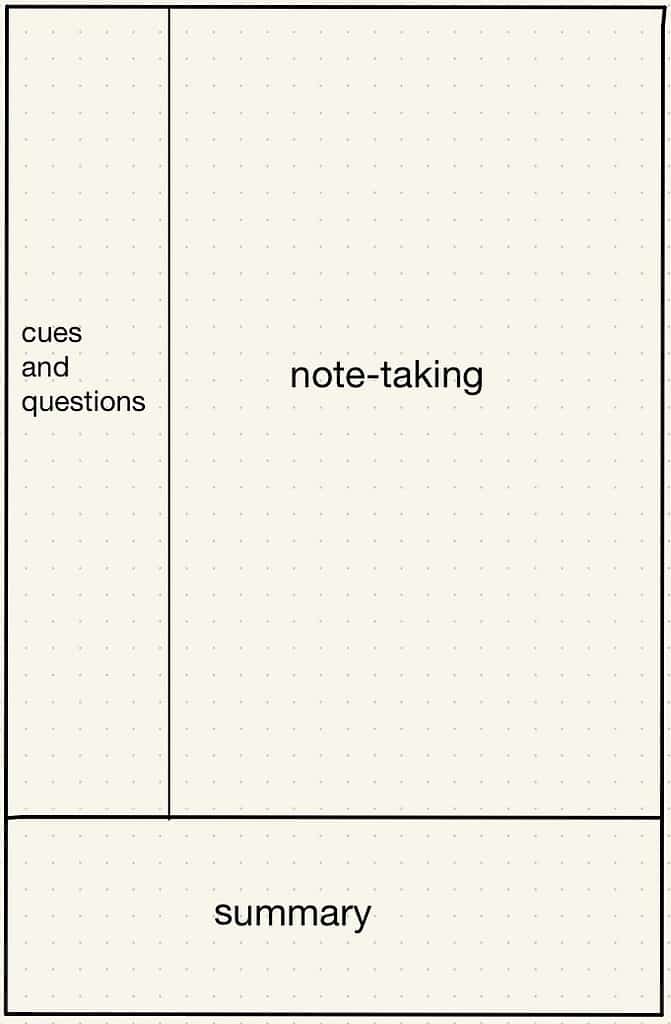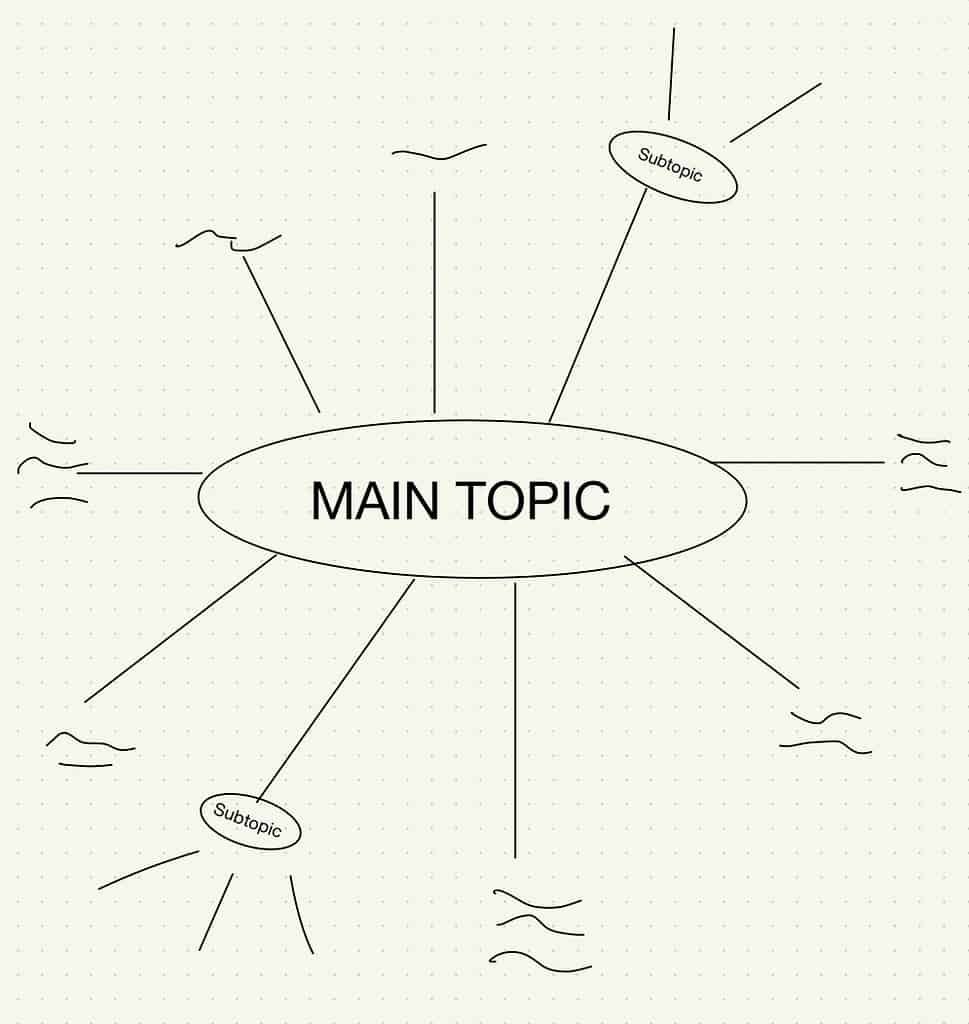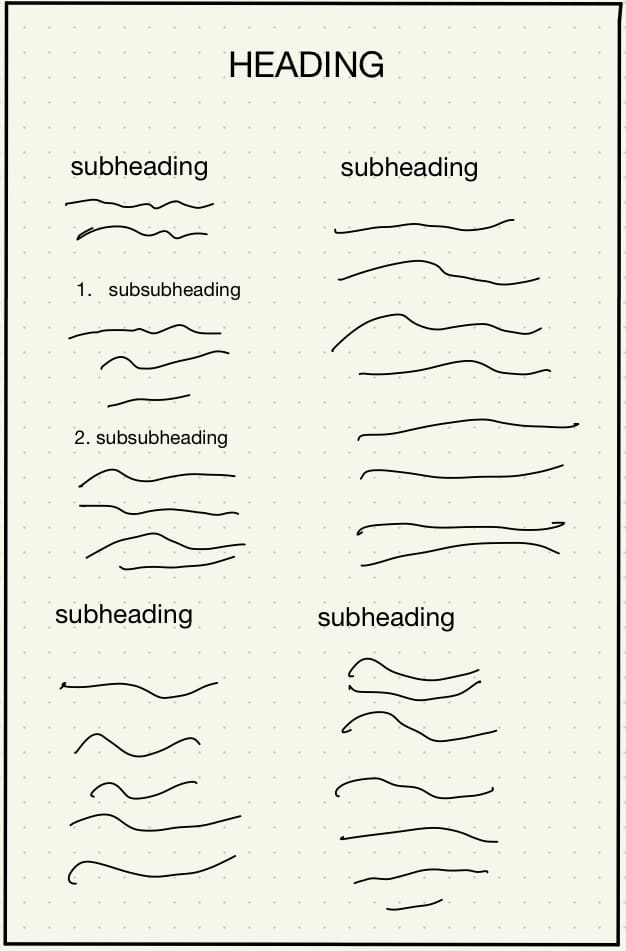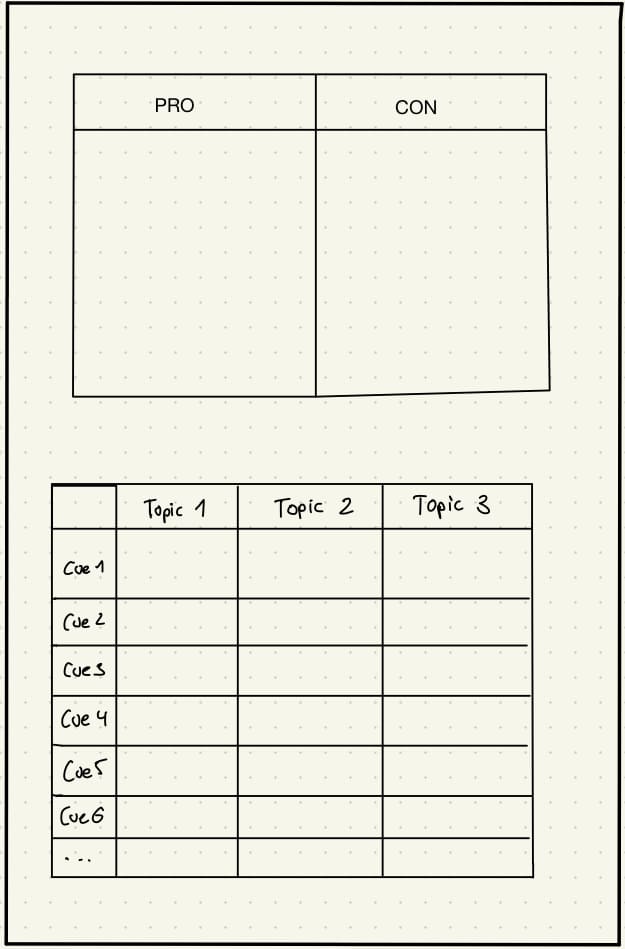picture via pinterest
By leveling up our note-taking we’ll make studying more productive and effective. It helps to organize and structurize thoughts and concepts, boosts memory retention and maximizes understanding. The following note-taking methods can be used for different needs. To achieve success a combination of these methods can be beneficial since each method is the most effective in specific situations.
Number 1:
THE CORNELL METHOD

Divide your paper into three sections: a narrow column on the left for cues and questions, a larger area on the right for note-taking, and a small section on the bottom for summarizing.
This method is especially fitted for the first approach to a topic because it leaves room for questions which makes this method engaging and reinforces understanding. The summary grants a quick overview when reviewing your notes and through summarizing you’ll memorize better since you have to put into the effort to describe the topic in a few simple sentences.
Number 2:
MIND-MAPPING

Almost everyone is familiar with mind maps. In case you’re not, you simply place the main topic in the middle of the page and branch out with related subtopics or supporting points. This technique is especially useful for brainstorming or connecting ideas as well as understanding relations between complex information by creating this sort of web.
To make it even more visual, use different colors, symbols, and images.
Number 3:
OUTLINE METHOD

For an easy-to-review clear overview, this layout is ideal. It makes it easy to identify key concepts and relationships between topics. The outline method consists of headings, subheadings, and sometimes even subsubheadings. Every heading and subheading has its supporting details below them.
Number 4:
CHARTING METHOD

As the name suggests, in this method we’ll divide the page into columns and rows to create a table format. Each row represents a different concept or category, while the columns provide space for relevant details or data.
This method works well for comparing and contrasting information such as pro and con lists and cause and effect relationships.
Number 5:
FLOW-BASED NOTE-TAKING
This technique is excellent for expressing creative thoughts and brainstorming. By jotting down everything that comes to mind, you’ll have a lot of information you can then sort and organize. That way you’ll empty your mind and organize your thoughts.












